Eugenics in America
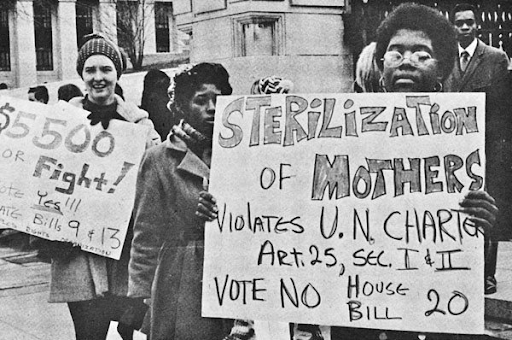
Photo : Women picket in 1971, indyweek.com
October 26, 2021
White people have always had something to say about who they believed to be ‘unfit’ to live in society, and, as it usually goes in America, this malice did not remain in word of mouth alone. Rather, it took the form of the American Eugenics movement.
The History
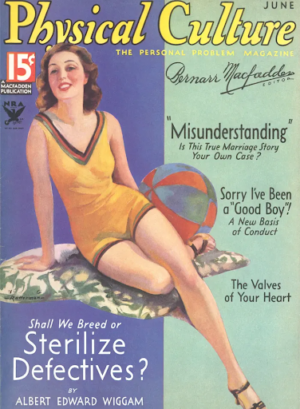
The American eugenics movement began in the late 1800s with the work of well-known eugenicist Charles Davenport and was set into action during the early 1900s.
This movement continued well into the late 1970s and harbored the goal of reducing ‘undesirable’ traits in the human race through a means of selective breeding.
Davenport formed the Eugenics Record Office in 1910 with the goals of collecting information on family gene pools that had desirable physical or mental traits, as well as working towards eliminating traits they considered undesirable.
It was after the formation of this organization that sterilization laws came into place.
The government passed laws that authorized forced sterilizations of those they deemed unfit to pass on their genes such as citizens who had mental or physical disabilities. Interracial couples were banned from marrying as well.
It was a Supreme Court case that really set the stage for the era of American Eugenics.
In the 1927 case Buck v. Bell, the Supreme Court decided that states may sterilize inmates of public institutions, arguing that epilepsy, foolishness, and ‘feeblemindedness’ were hereditary traits and that those who carried them should be restricted from passing them on to the next generation.
Our Laws
Passing legislation on sterilizing inmates was one step on the path to a nasty future; the road to forced sterilization was not far away.
Physicians started lobbying for laws that allowed involuntary sterilization for people they thought were ‘hereditarily defective.’

After the first sterilization law was passed in Indiana in 1907, 30 more states had followed suit by 1931. During this period, more than 60,000 people were sterilized against their will, mostly impacting people of color.
Everything we do in America always loops back around to target nonwhite citizens.
Native and Black women were disproportionately targeted for forced sterilizations, with 25% of Indigenous women forcibly sterilized after 1970, and black women being 3 times more likely to be sterilized than white women, and 12 times more likely to be sterilized than white men.
In our own state of Massachusetts, we had laws prohibiting marriages between Asian Americans and white Americans (as a way to prevent ‘race mixing’), and the disabled (mentally and physically) were banned from marriage altogether.
The mentally disabled weren’t allowed to leave mental institutions even after sterilization, effectively barring the disabled from society.
In our neighboring state New Hampshire, the ‘feeble-minded’ were allowed to marry, but only if they were sterilized.
Schools were required to keep track of everyone who was in and out of school as well as prisoners who were discharged or on parole. This information was used to make sure that those who applied for marriage licenses weren’t incompetent, however, these limitations were lifted if the individual was sterilized.
If a couple violated any of New Hampshire’s sterilization laws they could be fined anywhere from $50 to $500, serve 30 days in jail, or both.
For more information about specific state laws, click the link here.
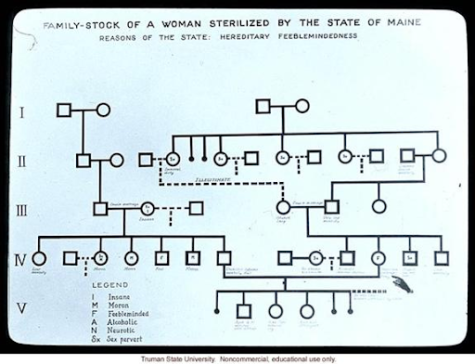
California Specifically
Out of all our states, not one had eugenic laws quite like California.
With a total of 60,000+ people sterilized nationally, ⅓ of these procedures took place in California. The number is estimated to be even higher, as records were both poorly kept and destroyed.
Of the over 20,000 people sterilized in California, 60% were considered mentally ill, 4% were black (even though they only made up 1% of California’s population), and 8% were Mexican.
Again, these percentages are considered to be conservative due to the fact that many records were difficult to access or had been altered.
California had two big laws enacted and a determining court case during the eugenics craze.
The first law passed in 1909 targeted patients in state hospitals, mental institutions, and prison inmates.
The second law passed in 1913, repealing the first law and establishing different guidelines. This law allowed for a wider range of people to be sterilized and established the State Lunacy Commission, which had the power to order sterilizations.
The court case happened during the 1930s, in which the Judge decided that sterilization performed at private practices without the consent of the patient was perfectly legal as long as a guardian had requested the operation (read more about this case here.)
California’s laws often went beyond the typical sterilization of ordering vasectomies or tubal ligations. California made it legal to castrate a man and to remove the ovaries from a woman, permanently preventing the reproduction of anyone the law saw as unfit for society.
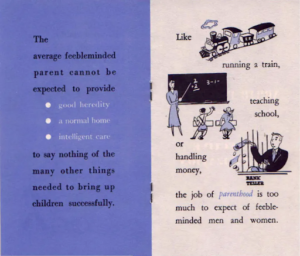
Germany:
As mentioned in my previous article, Nazi Germany took much inspiration from American race law, but that wasn’t the only thing they picked up from us.
Much of the Nazi’s research and legislation on eugenics came from America and our own programs.
Their law for the Prevention of Offspring with Hereditary Diseases was modeled on laws passed in Indiana and California.
Hitler himself referred to American eugenics in his infamous autobiography, Mein Kampf, citing how successful California’s sterilization laws were. He even wrote that “‘There is one state in which at least weak beginnings toward a better conception of citizenship is noticeable. Of course, it is not our model German Republic, but the United States.’”
As far as I’m concerned, if Adolf Hitler complemented our country on multiple things, multiple times, we’ve done something wrong.
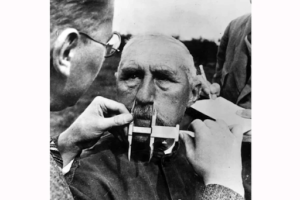
Source: Universal History Archive Getty Images
Charles Davenport, mentioned in the first section, supported Germany’s ‘racial hygiene’ and eugenics program. He even participated on the editorial boards of two major German racial hygiene journals, the Journal of Racial Studies and its Neighboring Areas and the Journal of Human Heredity and Constitutional Studies (originally Zeitschrift für Rassenkunde und Ihrer Nachbargebiete and Zeitschrift für Menschliche Vererbungs-und Konstitutionslehre.)
Davenport’s direct work on Nazi eugenics journals is not the only connection we have to their eugenics program.
American eugenics was the standard citation for the Nazis, with an active back and forth traffic between American and Nazi eugenicists in the late 1930s.
By the end of the war, American eugenicists stopped their explicit praise of the Nazis, but it didn’t go both ways. The Nazis continued to cite American research as proof of their own and even used the Buck v Bell case as a defense for their actions during the trial at Nuremberg.
America was well aware of the Nazi’s practices, they just didn’t care.
Modern Times
Sterilization rates remained high even after WWII
The 60s and 70s had the “Mississippi Appendectomy,” an involuntary sterilization procedure done to many poor Southerners, 85% of whom were women and 40% of whom were women of color, who were deemed unfit for reproduction.
Eugenics laws and programs slowly began being repealed during the mid-70s as attitudes toward civil and human rights started to change; but, this isn’t to say that practices stopped altogether.
Between 1997 and 2013, California prisons sterilized around 1,400 unwilling women. The state paid doctors over $150,000 to perform tubal ligations that former inmates say were done under coercion.
The number of inmates sterilized during other surgeries is unknown.
The staff targeted inmates whom they thought were likely to be incarcerated again. The majority of these women were black and Latina.
What’s even more horrifying is that the receiver’s office, the very people responsible for the safety of these inmates, knew about these sterilizations, and did nothing to stop them.
None of these doctors thought they needed permission to perform these surgeries.

In Conclusion
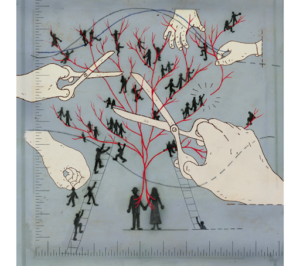
Despite modern traces of the eugenics movement, and despite the fact that this faux science had a chokehold on national policy and governmental power for decades, this side of American history is absent from our textbooks.
Bits of the eugenics movement can still be felt today, with the treatment of those with disabilities and the debate around whether they should be ‘allowed’ to pass on their genes.
Disabled people still to this day have restrictions around marriage. If disabled people get married, they’re highly likely to lose their SSI and Medicaid, which are need-based and focus on current income and assets.
If they marry someone who is not on these programs, their partner’s income is now taken into consideration, which changes eligibility status. Many disabled people lose their SSI and Medicaid benefits because their combined incomes are too high.
As a result, some disabled people are forced to divorce or live separately from their partners in order to keep SSI and Medicaid.
Disabled people are forced to make a choice between the programs they need to survive and their loved ones.
I’ve even had family members tell me that the pandemic doesn’t matter because it ‘only affects’ the old and the fat as if their lives somehow matter any less than the young and the skinny.
The eugenics movement can be seen in conversations about the homeless, how they deserve to live on the streets in hunger because they don’t have a job. As if their right to live is equated to their contribution to capitalism.
Eugenics might not be as prominent as the laws from the 30s, but they’re still felt all around us, and people are still impacted by them today.
In true American fashion, we’ve done very little to amend the damage done to the people impacted by the eugenics movement; we moved on without any effort to unlearn the bigotry of this era, leading to the tone of today, where people feel comfortable saying disabled people shouldn’t be allowed to live normally.
Acknowledging our past can go a long way, we have to start somewhere, might as well start with the bare minimum.

Mary MacDonald • Oct 28, 2021 at 9:51 pm
I think this article is very important because I did not know about all of these cases of eugenics in American history. Like you mentioned, I think the American school system fails to teach us about this. I did previously know about eugenics in Germany, but I did not know that American played a huge role in influencing the Nazis till I read this article. I appreciate you choosing to write about this topic since it needs more attention and it is awful that this part of history has mostly been ignored and forgotten. This article is eye opening about how America loves to not take accountability for its mistakes. I found this article very informative and well written.
Cristian Gomez • Oct 26, 2021 at 1:13 pm
Interesting article, but I think you should mention other ways eugenics are preformed, specifically abortion, abortions happen more often with poor income communities and to people of color.
Unwanted genes are also wiped from the gene pool in places like Iceland, where almost every single preborn child in Iceland with down syndrome is killed, leading to only 1 to 2 children born with down syndrome a year.
I think if you ever make a follow-up you should mention abortion in and out of the USA as a tool of eugenics, whether influenced by government or by society.